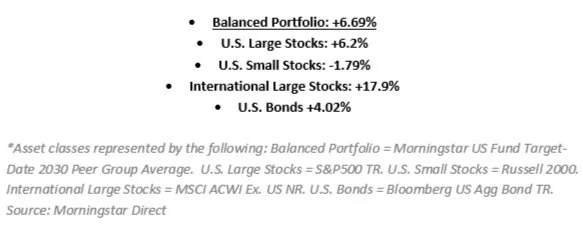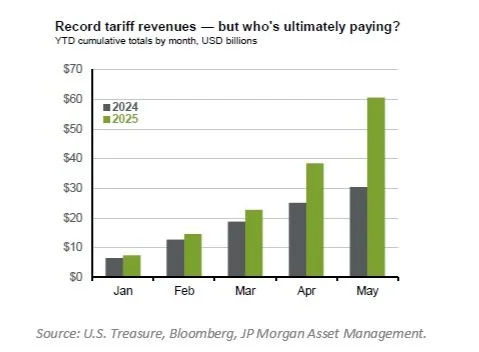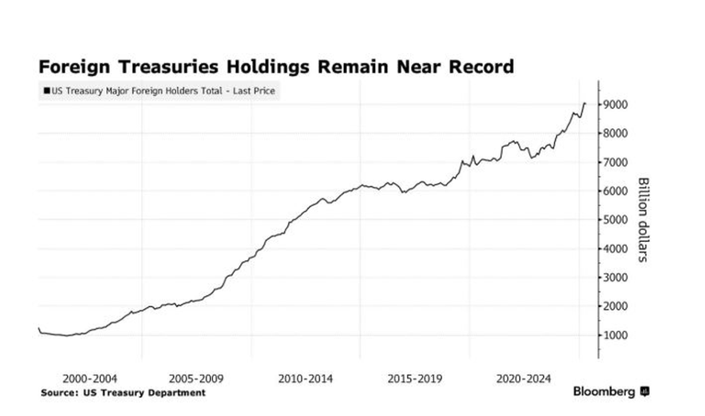 Contributed by: Iris Hayes
Contributed by: Iris Hayes
![]() Edited by: Kelsey Arvai, CFP®, MBA
Edited by: Kelsey Arvai, CFP®, MBA
The Emerging Wealth Series
Iris Hayes and Josh Golden join The Center for the summer. This series is a summer intern-led exploration of the values, behaviors, and trends shaping the future of wealth.
Think back to your earliest memories of money. Were you the kind of child who let your piggy bank grow heavy, or did you tend to unplug it at the melody of the ice cream truck? How did you go about spending money gifted from birthdays? Holidays? Early behaviors such as these laid the foundation for how you spend your money now. Recounting these experiences is important, because they give you a better understanding of your relationship with money. By challenging yourself to find patterns in the past, you will be able to make emotionally intelligent decisions with your money in the future.
Defining Your Story
What is my money story? A money story is a collection of memories, experiences, traumas, and events that shape the connection you feel toward money. It is generational, going back to the relationship your parents and their parents had with money. You may remember coming home to your dad sitting at the kitchen table. Head in hand, leaning over a pile of unpaid bills. Perhaps your mom stood by his side consoling him, "It'll be okay'" or maybe it caused tension in their marriage. In the household next door, funds were abundant but also hushed, never equipping your friend with the financial skills they need now.
These different upbringings influence the way individuals perceive their self-worth and their place in society. Those who grew up facing financial hardship had an awareness that success won't come easily. Whereas children brought up in wealth might take privilege for granted and be overconfident to a fault. Personally, coming from a very average working-class family, I recall blowing my allowance on $20 Lululemon headbands to establish status in middle school. These splurges would continue into high school and college, allowing me to keep up with my friends. As silly as it might seem, the things we do with money have a significant impact on our identity and how we wish to be perceived.
Whatever your money story is… whatever promises you made to yourself about how you will handle money as an adult, all have an influence on your financial wellness.
Re-Framing
Take, for instance, the 2008 recession—many struggled with the economic impact on their retirement accounts. This experience may have altered their view of money and sense of safety, leading to changes in their behaviors with money (such as keeping more cash than necessary). This exemplifies the connection between money-related stress and our habits.
The goal is not to completely avoid stress or hardship; the goal is to have a plan in place to help ease your mind during times of uncertainty. Let's face it: life is full of uncertainty. We do not know what will happen, but what we can do is plan for the worst-case scenario. This doesn't disregard your wants and needs but rather recognizes unfavorable reactions you might have towards money. These reactions can look and feel intense, feelings such as fear, anxiety, and guilt. By proactively planning and identifying these reactions, you can maintain your financial trajectory. Life will feel easier when you can refer to your plan to help guide you, even considering unforeseen economic and financial hardships.
Circling back to the Lululemon headbands, I've found that I've grown to reach greater satisfaction by building my savings to spend on experiences rather than spending frivolously on retail. I still enjoy shopping; however, now, I do it more consciously. I suggest buying with intention. For me, that looks like a mix of new, high-quality basics and filling out the rest of my wardrobe with fun pieces from second-hand or vintage stores. That is what works for me and my budget.
Take a moment to set financial goals and evaluate how they align with your spending habits. Is online shopping for a quick boost of serotonin getting in the way of saving for something that will bring more happiness in the long run? Do you feel yourself caving into excessive spending that leaves you in shambles come Sunday morning (AKA Sunday Scaries)?
The time that you put aside to set value for these spending habits and their relation to your end goals will be vital for your success. Pairing these strategies with professional guidance can make the transition from reactive spending to intentional financial planning even more impactful.
What are some financial habits you want to rework? We would love to hear from you! Reach out to us at CFPIntern@CenterFinPlan.com or call us at (248)-948-7900.
The foregoing information has been obtained from sources considered to be reliable, but we do not guarantee that it is accurate or complete, it is not a statement of all available data necessary for making an investment decision, and it does not constitute a recommendation. Any opinions are those of the author and not necessarily those of Raymond James.
Securities offered through Raymond James Financial Services, Inc. Member FINRA/SIPC. Investment advisory services offered through Center for Financial Planning, Inc. Center for Financial Planning, Inc.® is not a registered broker/dealer and is independent of Raymond James Financial Services.




















